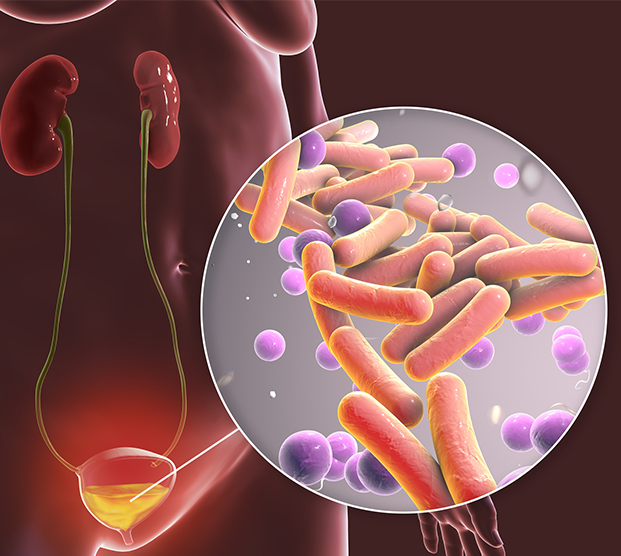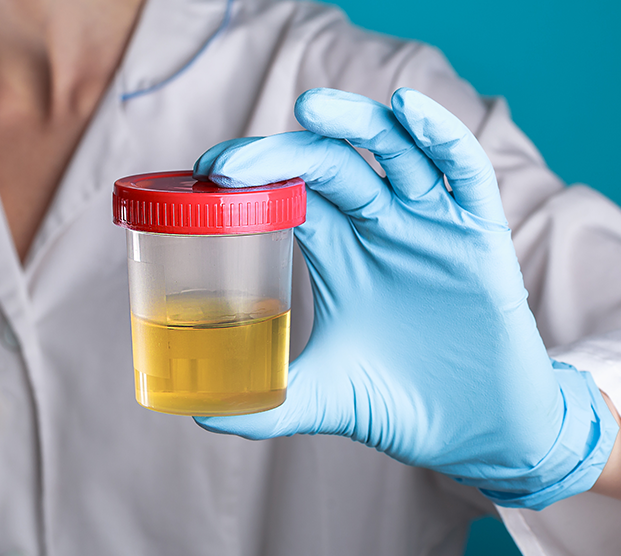


UTI Symptoms
During a urinary tract infection, the lining of the urinary tract becomes red and irritated, leading to the following symptoms:
Pain in the side (flank), abdomen, or pelvic area
Abnormal urine color (cloudy urine) and strong or foul-smelling urine
Pressure in the lower pelvis
The need to urinate at night
- Frequent need to urinate (frequency)
- Urgent need to urinate (urgency)
- Incontinence (urine leakage)
- Painful urination (dysuria) and blood in the urine
A urinary tract infection may also be associated with the following symptoms:
Pain during sex
Penis pain
Mental changes or confusion
Pain in the flank (side of the body) or lower back
Vomiting
Fatigue
Fever (temperature above 100 degrees Fahrenheit) and chills
The Risk of UTIs
Anyone can get a urinary tract infection, but women are more susceptible to UTIs because the urethra (which is the tube that carries urine out of the body) in females is shorter and closer to the anus, where E. coli bacteria are commonly located.




Older adults are also more likely to develop cystitis, possibly due to incomplete emptying of the bladder. A few conditions related to this illness include an enlarged prostate and bladder prolapse (a condition where the bladder falls or slips out of the normal position).
Patients with frequent urinary tract infections will need to undergo testing to check for other health conditions, such as diabetes or an abnormal urinary system, that may be contributing to the infections.
Patients with frequent UTIs may be given low-dose antibiotics for a set period of time to prevent the infection from returning. This cautious approach to treating frequent UTIs is to prevent the body from developing a resistance to the antibiotic., but the approach isn’t used very often.
Causes of UTIs
UTIs are caused by microorganisms — typically bacteria — that have traveled to the urethra and bladder, causing inflammation and infection. UTIs most commonly occur in the urethra and bladder, but may also travel up the ureters and infect the kidneys.
Diagnosing UTIs
Patients that don’t experience relief from treatment may also need to undergo an ultrasound, cystoscopy, and CT scan.
Treatment Options for a UTI
Patients may be given antibiotics to kill bacteria and fight the UTI. The physician will pick a drug that best treats the particular bacteria causing the infection. A few antibiotics commonly used to treat UTIs include:
Nitrofurantoin
Cephalosporins
Sulfonamides (sulfa drugs)
Doxycycline
Amoxicillin
Trimethoprim/sulfamethoxazole (Bactrim®)
Quinolones (such as ciprofloxacin [Cipro®])
